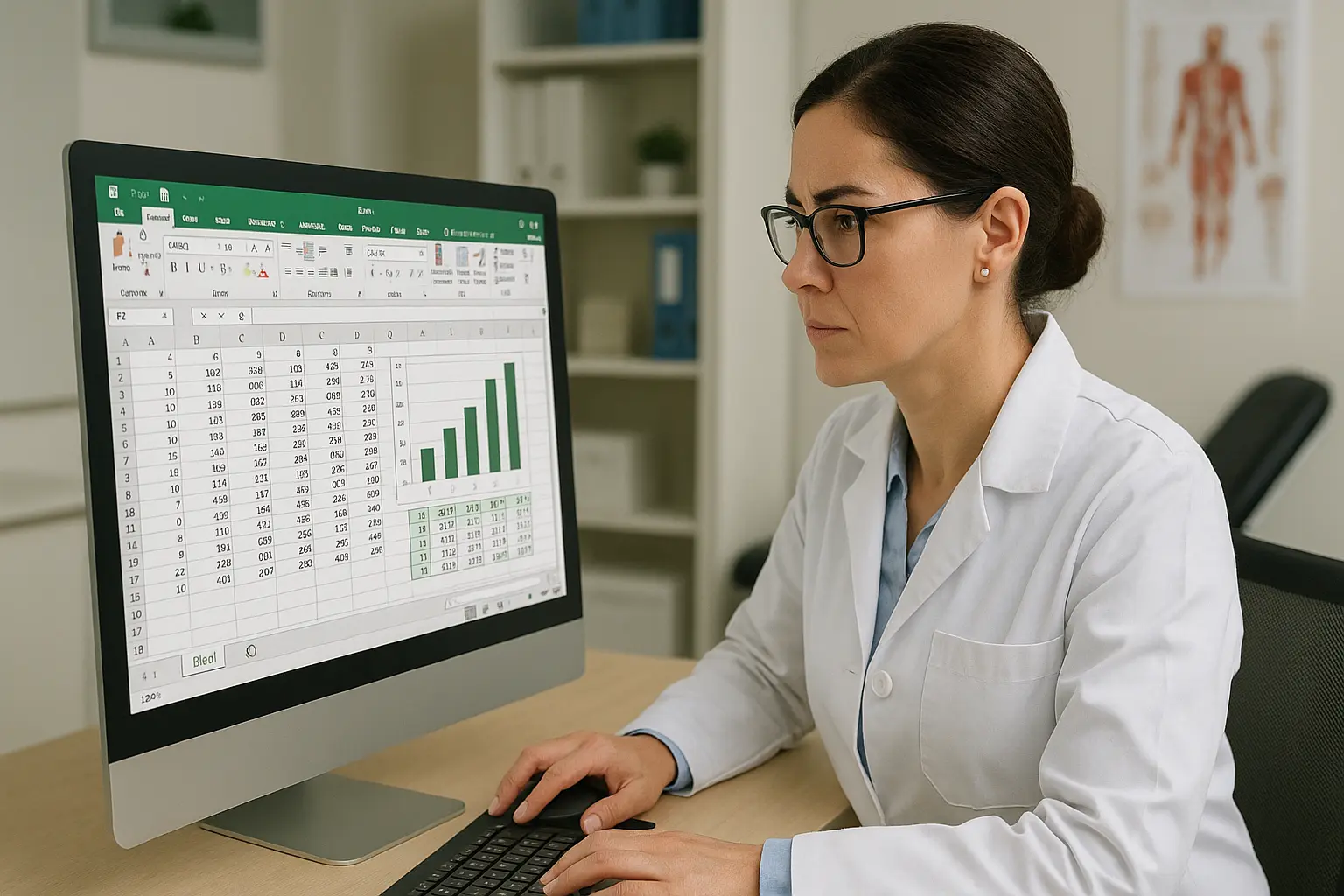
Financial sustainability is one of the pillars of any well-managed clinic. Controlling expenses, understanding cash flow, and planning investments require constant attention. Within this routine, the accounts payable and receivable report plays a strategic role, offering a detailed view of the clinic’s obligations and revenues and allowing managers to make decisions based on accurate, up-to-date data.
Across clinics of different sizes — whether multidisciplinary, dental, or specialty practices — the lack of financial control can compromise the entire operation. A well-structured report not only “tracks numbers” but also reveals the business’s financial health, identifies bottlenecks, and prevents unpleasant surprises at the end of the month. In this article, you’ll understand why financial reports are indispensable for management, which ones are most important, the risks of relying on spreadsheets, and how modern systems like Ninsaúde Clinic make this process simpler, automated, and strategic.
Before we continue, we need to ask: Are you already familiar with Ninsaúde Clinic? Ninsaúde Clinic is a medical software with an agile and complete schedule, electronic medical records with legal validity, teleconsultation, financial control and much more. Schedule a demonstration or try Ninsaúde Clinic right now!

Financial reports: the foundation for sound decision-making
Making assertive decisions requires clarity about the present and foresight about the future — and that’s exactly what financial reports provide. They consolidate information about income and expenses, fixed and variable costs, recurring payments, and due dates, creating a complete financial overview of the clinic. With this data, managers can plan investments, project revenues, and build financial reserves for slow periods.
Another major advantage of financial reports is transparency in communication. In clinics with multiple partners or administrators, they ensure everyone has access to consistent financial information, reducing conflicts and misinterpretations. This clarity also helps in negotiating with suppliers and service providers, since managers know exactly which accounts can be advanced, deferred, or renegotiated.
Additionally, financial reports allow managers to monitor performance indicators — such as average ticket per patient, cost per appointment, and delinquency rates. These metrics are essential for determining whether the clinic is growing sustainably and if resources are being used effectively.

Essential reports for a clinic’s financial department
The accounts payable and receivable report is the heart of financial control, but it’s not the only one. Complementary reports expand the manager’s strategic vision. The cash flow report, for instance, reveals financial behavior over time, showing patterns of higher and lower movement. The income statement (P&L) shows whether the clinic is profitable or operating at a loss by comparing costs, expenses, and revenues.
Another key report is the physician compensation report, essential for multiprofessional clinics that need to manage individual payments per production. The insurance and payer report is also critical, as it monitors receivables from health plans and forecasts payment dates.
When these reports are integrated, managers gain a real-time view of financial health, identify trends, and anticipate challenges. This enables better forecasting, purchasing decisions, and resource allocation, ensuring operational stability and long-term growth.
Why spreadsheets are no longer enough
For many years, spreadsheets were seen as a simple and affordable financial management solution. However, as clinics grow and processes become more complex, their limitations become clear. Manual entry increases the risk of errors, formulas easily break, and the lack of automation consumes valuable time and attention. As a result, managers must constantly review data to ensure accuracy.
Spreadsheets also lack real-time updates and integrated reports. In clinics with multiple departments — reception, billing, finance — it’s common for each area to use separate files, leading to duplicated or inconsistent information. This fragmentation slows down management and increases the risk of making decisions based on outdated data.
Another critical issue is data security. Spreadsheets saved locally are vulnerable to data loss or leaks, especially when they contain sensitive information such as payments or patient data. Under HIPAA regulations, this poses a significant compliance risk. Clinics that rely solely on spreadsheets face challenges in organization, traceability, and protection — wasting valuable time that could be used on strategic improvements.

Technology and automation: the role of clinic management systems
Clinic management systems were created to overcome the challenges of manual control. Unlike spreadsheets, they automate repetitive tasks, centralize information, and generate detailed reports in seconds. Managers can instantly access dashboards with essential metrics such as current balances, expenses by category, and projected cash flow.
Ninsaúde Clinic exemplifies how technology simplifies clinic finances. When you record accounts payable and receivable, the system automatically generates reports, eliminating manual work. Its dynamic financial panel displays values by unit, payer, or period — providing both detailed and consolidated insights.
Moreover, Ninsaúde Clinic integrates financial data with the entire operation, connecting it to scheduling, physician payments, insurance billing, and CRM. This provides a unified view of the patient’s financial journey — from appointment booking to payment collection. Accurate reports and automation turn management into a truly strategic process.

Ultimately, using a modern system reduces errors, saves time, and enables data-driven decision-making. Ninsaúde Clinic transforms financial control into intelligent management, combining efficiency, accuracy, and security for growing clinics.
Efficient clinical management
In a competitive healthcare market, good financial management is what keeps a clinic stable and expanding. Accounts payable and receivable reports form the foundation for assertive decisions, long-term planning, and accurate forecasting. Spreadsheets may have worked in the past, but integrated systems now guarantee precision, agility, and safety.
With Ninsaúde Clinic, managers no longer waste time reconciling data manually. The platform automates reporting, offers real-time visibility, and provides a comprehensive overview of financial health — allowing clinics to focus on what matters most: patient care and sustainable growth.
Did you enjoy this information? Then get ready for a continuous learning journey by following our blog. Are you a doctor, healthcare professional, or clinic manager and still don’t know the benefits of Ninsaúde Clinic? Stay ahead, optimize your processes, and raise the standard of excellence in patient care!

